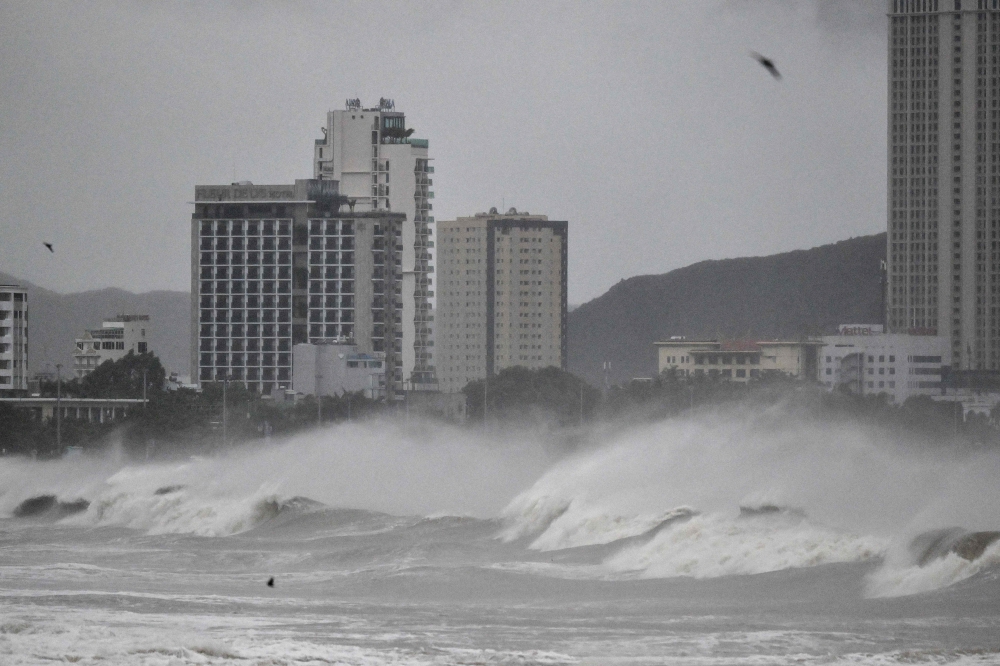Typhoon Kalmaegi shows why South-east Asia will be most affected by climate change — Phar Kim Beng

NOVEMBER 8 — When Typhoon Kalmaegi struck the central Philippines in early November 2025, the scale, swiftness and severity of the disaster stunned many. The typhoon killed at least 140 people and left 127 reported missing, in an event declared the deadliest natural disaster of the year worldwide.
While the Philippines is the focal point of this tragedy, the implications for the entire Southeast Asian region cannot be ignored. Kalmaegi is a warning: Southeast Asia is increasingly vulnerable — and not just to storms, but to a spectrum of climate change–amplified risks.
A perfect storm of vulnerability
The devastation wrought by Kalmaegi illustrates three converging risk factors that make Southeast Asia particularly exposed.
First: geography. The Philippines’ central province of Cebu was hit especially hard — flash-flooded when waterways overflowed, rivers surged and urban areas were overwhelmed. The event occurred in a location where coastal and low-lying populations intersect with heavy rainfall and complex terrain.
Second: the role of climate change in intensifying the storm. In the case of Cebu, meteorologists noted that the rainfall that accompanied the storm was “1.5 times the amount that would typically fall in November” — what a senior forecaster described as “once in 20 years”. Warmer oceans and a warmer atmosphere mean stronger tropical systems and heavier precipitation — a trend supported by regional science.
Third: socio-economic and infrastructural fragilities. The flooding was aggravated by clogging of rivers, quarrying and deficient flood-control infrastructure — all acting as risk multipliers. Across many Southeast Asian states, high population densities, rapid urbanisation, informal settlements and limited adaptive capacity amplify the damage when extreme weather strikes.
Why Southeast Asia will be among the hardest hit
Beyond this storm, the structural reasons for regional vulnerability are well documented:
Many Southeast Asian countries have long coastlines and large low-lying zones, making them susceptible to rising sea levels and storm surges.
Rapid urbanisation and development have placed large numbers of people and infrastructure in flood-prone or exposed zones.
Economic sectors like agriculture, fisheries and tourism — which many Asean states heavily depend on — are highly sensitive to climatic shocks.
A lag in resilience and adaptation capacity: many countries face regulatory, fiscal and institutional constraints in raising defences or climate-proofing infrastructure.
The Kalmaegi disaster thus is more than a single tragic event. It represents a microcosm of what is coming: more intense storms, heavier rainfall and more severe flooding — all of which will test the region’s vulnerability.
Implications for Malaysia
For Malaysia, the broader message is urgent. While Malaysia was spared the worst of Kalmaegi’s direct impact, our region’s shared fate demands that we act with foresight. Malaysia must:
Prioritise investment in flood-control infrastructure, early-warning systems, resilient urban planning and climate-smart agriculture.
Strengthen cross-Asean cooperation in disaster risk reduction, data-sharing and mobilising regional adaptation financing.
Reinforce the logic of climate justice: countries such as ours — which contribute modestly to global emissions yet face outsized risk — must press for both mitigation and adaptation in global fora.
A call for civilisational responsibility
Southeast Asia stands at a crossroads. Our geography, demography and development trajectory make us uniquely exposed. The Kalmaegi tragedy is a reminder that climate change is not some distant threat — it is here and now. It is civilisational in scope: affecting livelihoods, human security, migration, economic growth and regional stability.
As Asean’s member states — and for Malaysia in particular — our responses must be grounded in both realism and ambition. Realism because the risks are real and mounting; ambition because we must transform adaptation into a strategic strength. Coastal zones need mangrove restoration, urban drainage systems need upgrading, rural communities need resilient crop systems, and all of us need the institutional capacity to act before the next disaster.
The Philippines may currently be in the eye of the storm, but the message is continental. Unless we speed up our adaptation and resilience efforts, Southeast Asia will pay a heavy price — socially, economically and morally. The time to act is now, before more Kalmaegis lie in wait.
* Phar Kim Beng, PhD, is a Professor of Asean Studies and Director of the Institute of International and Asean Studies (IINTAS) at the International Islamic University of Malaysia.




